Q&A – Ask Neil: April 11, 2024
(Please read these instructions carefully.)
Before you post your question, please look at recent issues to see if someone else has already asked it. You might find your answer there.
How to submit your question…
(Note: You may need to allow a pop-up window to come up in order to get the link for sending your photo(s). If you have already submitted your question and didn’t see the pop-up window, please click here.)
• Click the link provided below to post your question. After you submit your question, a new window will pop up giving you the address to which you can e-mail a SHARP, HIGH-RESOLUTION PHOTO to accompany your question. Please DO NOT SEND THUMBNAIL PHOTOS in case I need to zoom in to see things.
• Click here to post your question.
• Please ONLY POST YOUR QUESTION ONE TIME. We can only accept a set number of questions each week, and when we get duplicates it costs other people their chances.
• One question per reader, please.
• Please use this only for posting questions – not for standard emails.
• Watch for your answer in the following week’s e-gardens.
• I choose those of greatest general interest. For example, plant IDs seldom make the cut.
• I must have your first name or initials.
• I must have your city or county. (Texas is a very large state.)
QUESTION 1
WHAT TREES WOULD GIVE GOOD ORANGE FALL COLOR?
Question: We have two Shumard red oaks, three pecans, one live oak, one Chinquapin oak, and one Japanese maple on our property. We have red and yellow fall color covered, but I’d like to add orange. Would you recommend sugar maple, sweet gum, or something else? Forrest F., Cleburne.
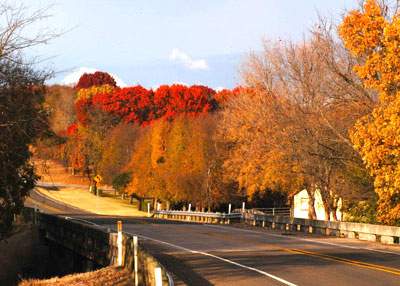
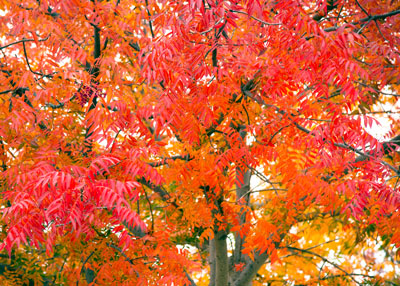

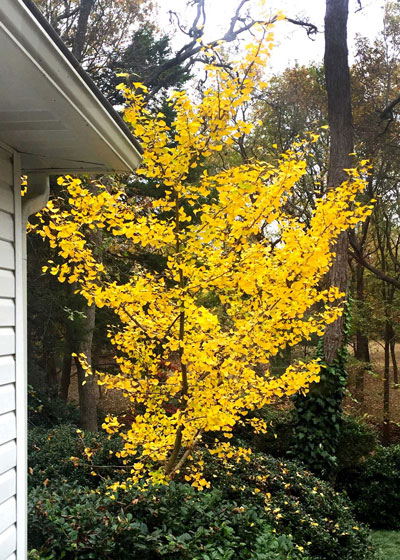
Answer: I might lean toward something else because those aren’t as happy with Johnson County soils (unless you have the sandy loam native soil). Orange is an odd color. It bridges between yellow and red. The highway scene in my four photos is of Shumard red oaks about 5 miles from our house in Collin County. Note how orange they looked that year. Just beautiful alongside the American elms. And we think of Chinese pistachios as being primarily red (like sweet gums), but there’s a lot of orange mixed in with the red. The close-up is of a chalk maple in my own landscape. I almost never see it in nurseries, but I found one 25 years ago and I have loved it. It’s an understory tree that colors up every fall. You haven’t mentioned Autumn Gold ginkgo. It’s the most glorious yellow of any fall color tree I have – maybe my favorite fall color of them all.
QUESTION 2
HOW DO I PREPARE THE GROUND AND TREAT NEW ST. AUGUSTINE WHERE TARR KILLED PRIOR GRASS?
Question: (question posted verbatim) How to prepare the ground and treat new St. Augustine sod laid in an area due to grass dying because of TARR. Soil has been tested, Texas A&M, and confirmed, TARR and treatment for existing grass but no response for new sod on top diseases dirt. Cindy M., Spring.
Answer: I posted the entire question as presented because I didn’t understand it completely. It appears that the old sod tested positive for take all root rot by Texas A&M. It sounds like a treatment was made to the existing grass as per the recommendation of TAMU. (That probably would have been Azoxystrobin, since it is the only fungicide labeled for that disease that is available at consumer level.)
But from there on I do not understand “…but no response for new sod on top diseases dirt.” It sounds like new sod was planted. You will need to monitor the new grass for occurrence of TARR in it. It’s a tenacious fungus that is indeed likely to recur. Be sure, however, that you’re talking about grass that is receiving full or nearly full sunlight. Many people plant St. Augustine in shaded settings assuming it needs shade. It must have 6 hours of sunlight to thrive.
I’m sorry if my answer isn’t very helpful. I did the best I could.
You might find this week’s story on take all root rot in this issue helpful in your battles.
QUESTION 3
WHAT CAN WE DO TO HELP PALISADES ZOYSIA GROW THICKER?
Question: Two years ago we planted new Palisades zoysia after tilling and adding topsoil. This spring it has been slow to green up, and several areas are thinning. Our lawn service applied a fungicide. What else should we do? Bob W., The Colony.
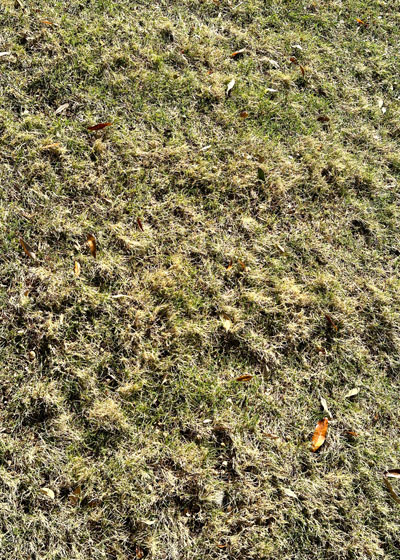
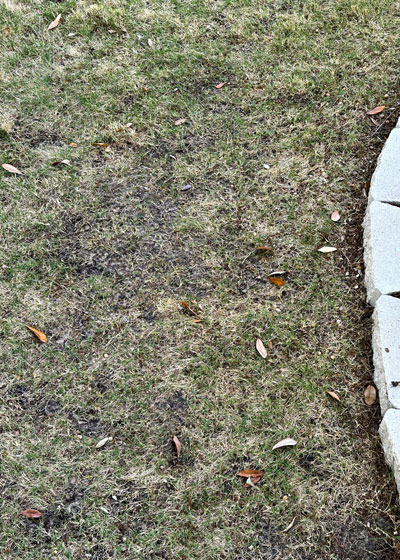
Answer: I have two questions back that might hold the answer. Why did you plant the Palisades zoysia? Had a prior grass died out due to shade? This time of year I become inundated with questions about bare spots in lawns that ultimately track back to areas that don’t receive enough sunlight. Unfortunately, all six of your photos you sent are close-ups, so I couldn’t tell if shade could have been a problem. Zoysias need more sun than St. Augustine.
The second question: Why did the lawn care company apply a fungicide? What fungus did they find? Zoysias are susceptible to take all root rot just as St. Augustine is. If this happens next spring you might want to have the Plant Disease Lab at Texas A&M culture the roots for the fungus to determine if it’s present. It is not identified by soil tests. TARR could account for the thinning and die out, also for the slow green-up, just as in the prior question above. Your maintenance company may have record of such a test. It would be futile to have tests run now since a fungicide has been applied.
Once you can sort through those answers you probably will be able to determine the next step in solving your problem. Zoysias are typically the last grass to green up in the spring, so I don’t become too alarmed in early April, but if you feel it’s just not coming along as fast as it should, that gives you a couple of possibilities.
I will add that the grass looks like it might need nitrogen. I assume you have fertilized it by now with an all-nitrogen fertilizer (30-35 percent of that nitrogen in encapsulated or timed-release form). It also appears that you have aerified your lawn and perhaps scalped it. Will you be collecting the plugs? There seems to be a good bit of debris left on top of the ground.
QUESTION 4
WHY IS BARK PULLING AWAY FROM THE TRUNK OF MY LIVE OAK?
Question: I have a 35-year-old live oak with a healthy canopy. The bark is separating from the trunk. I do not see insects. When I barely pull it, it is approximately 3 ft. up from the ground and 2 ft. across. What is causing that? Rodney E., Joshua.
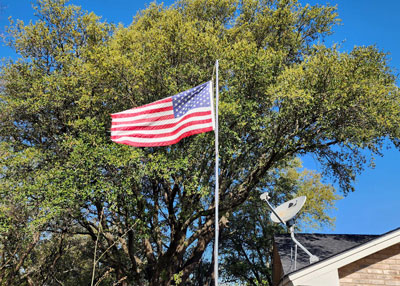
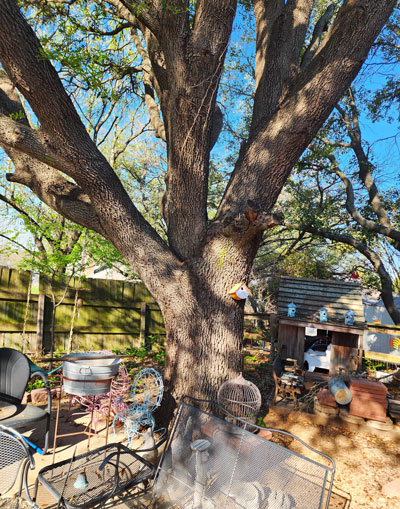
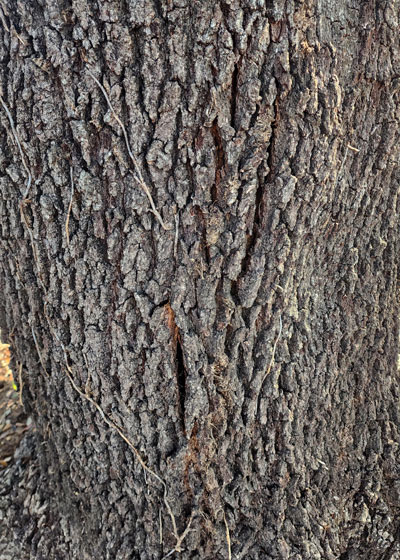
Answer: As you may have seen with several other readers’ questions over the past three years, live oaks were hit badly by cold damage from February 2021 known as “radial shake.” Bark was injured by the cold and popped away from the trunk. Some lost big sheets of bark immediately. Those trees died within weeks. Others lost bark more slowly and will probably heal. Do not peel bark away. That risks damaging the tree further. Let it fall on its own accord.
Also, I notice in your one photo, that there are significant stubs of branches left in place. That’s a sure way to lead to decay of those stubs and down into the trunk. Those really need to be trimmed back to the branch collars once temperatures get hot this summer (mid-July). It’s best not to do that pruning now lest you risk spread of the oak wilt fungus. Seal all cut surfaces with paint to prevent entry of the fungus.
QUESTION 5
HOW DO I GET RID OF SPIDERWORTS?
Question: Spiderworts blew into our yard a few years ago and have taken over my backyard of St. Augustine. How can I get rid of them? Betty G., Glen Rose.
Answer: Because of their rambling habits and stems that root freely into the soil, also due to their waxy leaves, spiderworts are difficult to eliminate. (No news to you, huh?) My suggestion, and what has worked for me: Mow frequently to keep them from producing more seeds. Apply a broadleafed weedkiller spray (containing 2,4-D) according to label directions. Mix one drop of liquid dishwashing detergent with each gallon of spray and apply it with a pump sprayer so that you can coat each leaf with the herbicide. Hose-end sprayers apply too much herbicide, and it tends to roll off the leaves.
QUESTION 6
DO WE NEED TO MODIFY OUR STAKING OF OUR NEW PECAN?
Question: One month ago on your advice we cut our curved Caddo pecan. We fertilized and watered it. You advised us to choose one trunk, to tie it and stake it. Is this post too close and too tight? Should we trim off the lower buds? Pam B., Rockwall.
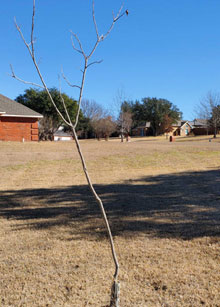
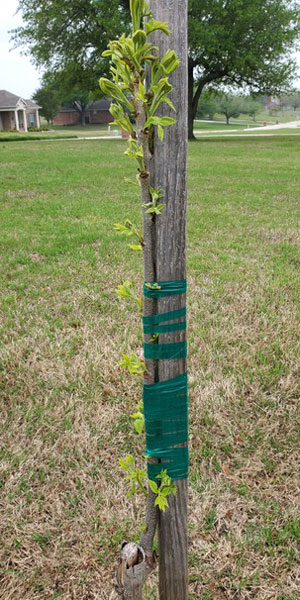
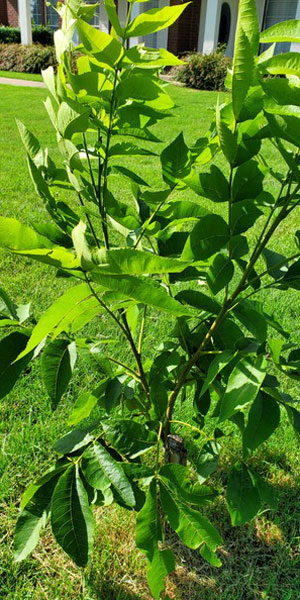
Answer: I have written this answer three times. Every time I look at your photos I see things differently. My hope originally was to get you to cut the trunk way back and select the straightest trunk that came out as new growth. I thought that was what I was seeing secured to your stake, but then I realized that would have been a lot of new growth for so early in the season. I hope you didn’t just take the angled stem and pull it up against the stake. If that’s all you did, then it’s going to go right back to the angle as soon as you remove the ties and stake, even if it’s two years from now.
So, that was one answer. I’ll leave it for consideration. But, in case I’m wrong on this last assumption, here was another answer that assumed this was all new growth. Do with it as you see fit:
Alternate Answer B: Leave it secured to the stake for a few more weeks, then remove the ties long enough to see how stable it is. You will want to leave it tied to the stake the remainder of this year.
It looks like there might be a stub of the old trunk within all that vigorous canopy of new growth. If so, trim back to one of the new shoots to remove the stub.
You can remove the lowest shoots, but there is a way of getting a pecan trunk to thicken more quickly. (This works on live oaks as well.) Called “trashy trunk,” it consists of pruning all side shoots to 5 or 6 inches of length for a couple of years. It will make the trunk look really stubbly, but research showed long ago that trunks left like that thickened up much more rapidly. Then, after 3 or 4 years you can prune them off flush with the main trunk up to the lowest permanent limbs (probably at 5 ft. or so).
